
Tasks aligned to 4.NF.4. They can also be used in 5.NF.4.
- Subject:
- Mathematics
- Material Type:
- Activity/Lab
- Formative Assessment
- Author:
- Drew Polly
- Date Added:
- 07/25/2020

Tasks aligned to 4.NF.4. They can also be used in 5.NF.4.
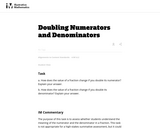
This is a task from the Illustrative Mathematics website that is one part of a complete illustration of the standard to which it is aligned. Each task has at least one solution and some commentary that addresses important asects of the task and its potential use. Here are the first few lines of the commentary for this task: How does the value of a fraction change if you double its numerator? Explain your answer. How does the value of a fraction change if you double its den...
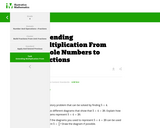
This is a task from the Illustrative Mathematics website that is one part of a complete illustration of the standard to which it is aligned. Each task has at least one solution and some commentary that addresses important aspects of the task and its potential use.

This parent guide supports parents in helping their child at home with the 4th grade Math content. Within the folder you will access Parent Guide PDFs in FIVE Languages: Arabic, English, Hindi, Spanish, and Vietnamese to help on-going communication with caregivers.

This resource accompanies our Rethink 4th Grade Math course. It includes ideas for use, ways to support exceptional children, ways to extend learning, digital resources and tools, tips for supporting English Language Learners and students with visual and hearing impairments. There are also ideas for offline learning.
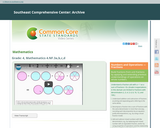
The Common Core State Standards (CCSS) videos are designed to support states, schools, and teachers in the implementation of selected math standards. Each video is an audiovisual resource that focuses on one or more specific standards through examples and illustrations geared to enhancing understanding. The intent of each content-focused video is to clarify the meaning of the individual standard rather than to be a guide on how to teach each standard, although the examples can be adapted for instructional use.
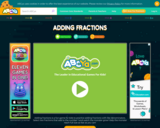
Adding fractions is a fun game for kids to practice adding fractions with like denominators. Select two fractions that add to the number 1 and watch the monster grow! Help the monster reach full size as fast as you can!
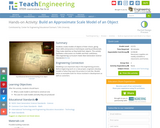
Students create models of objects of their choice, giving them skills and practice in techniques used by professionals. They make sketches as they build their objects. This activity facilitates a discussion on models and their usefulness.
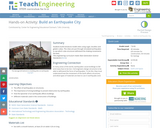
Students build miniature model cities using sugar, bouillon and gelatin cubes. The cities are put through simulated earthquakes to see which cube structures withstand the shaking movements the best.

This is a Common Formative Assessment for 4.NF.4.

For this online interactive, students create an equivalent problem with a unit fraction. Students are given problems to solve with the ability to skip the problem or check their answer. Their progress is tracked and shown above each problem.

This resource includes Exit Tickets for 4.NF.4.
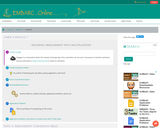
G4M7: Exploring Measurement with Multiplication. Contains 18 Lesssons.
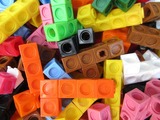
In this lesson students use various models to explore what happens when you multiply a fraction by a whole number.

This unit is for an EC pull-put sixth grade math class. Students will represent the same value as a fraction, decimal, and percentage as they label each continent on a map with the percentage of the world's population in each continent, based on information from the book, "If the World Were a Village." Students will discuss the distribution of populations around the globe and how that impacts those areas of the world differently.This lesson was developed by Virginia Campbell as part of their completion of the North Carolina Global Educator Digital Badge program. This lesson plan has been vetted at the local and state level for standards alignment, Global Education focus, and content accuracy.

This unit is for an EC pull-put sixth grade math class. Students have a discussion connecting their lives to the globe. They then discuss the concept of scale as it relates to maps/globes and the book "If the World Were a Village." Finally they use a graphic organizer to predict what the book is going to tell them about the people of the world.This lesson was developed by Virginia Campbell as part of their completion of the North Carolina Global Educator Digital Badge program. This lesson plan has been vetted at the local and state level for standards alignment, Global Education focus, and content accuracy.

This unit is for an EC pull-put sixth grade math class. Students present their poster projects to the class, and then write a reflection responding to the unit.This lesson was developed by Virginia Campbell as part of their completion of the North Carolina Global Educator Digital Badge program. This lesson plan has been vetted at the local and state level for standards alignment, Global Education focus, and content accuracy.

This unit is for an EC pull-put sixth grade math class. Teacher will model how to create a pie chart using data from the book, "If the World Were a Village." Then the class will create a pie chart together as guided practice. The class will draw conclusions about peoples' different experiences and perspectives from the data in the chart. The teacher will introduce the poster project to the students, and they will select a set of data from the book to create their own pie chart with. This lesson was developed by Virginia Campbell as part of their completion of the North Carolina Global Educator Digital Badge program. This lesson plan has been vetted at the local and state level for standards alignment, Global Education focus, and content accuracy.

This unit is for an EC pull-put sixth grade math class. In this lesson students create a pie chart from their chosen set of data and work on the other elements of the poster project, including interpreting and explaining the data.This lesson was developed by Virginia Campbell as part of their completion of the North Carolina Global Educator Digital Badge program. This lesson plan has been vetted at the local and state level for standards alignment, Global Education focus, and content accuracy.

In this lesson students explore the multiplicaton of fractions by whole numbers in the context of shopping for a birthday party.